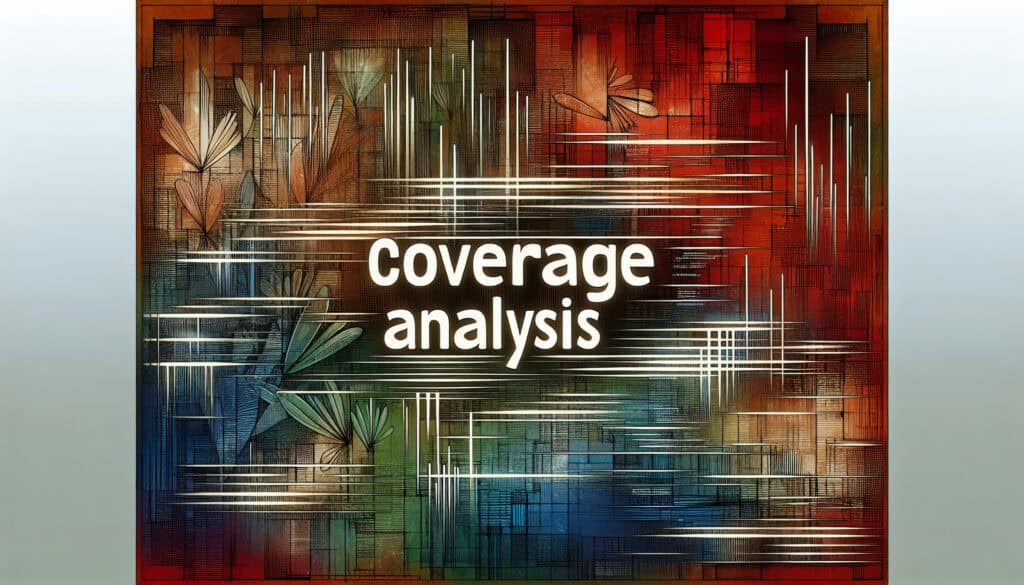The process of determining the percentage of a software’s source code that has been executed by a particular suite of tests.
- 方法: 制造业, 质量
覆盖面分析

覆盖面分析
- 敏捷方法论, 持续改进, 流程改进, 质量保证, 质量控制, 软件测试, 测试方法, 验证, 验证
目标
如何使用
- Tools are used during testing to monitor which lines, branches, or paths of the code are 'covered' by the test cases. The output is a report, often a percentage, indicating the extent of testing.
优点
- Identifies untested parts of the code, providing a clear path to improving the test suite; gives a quantitative measure of testing thoroughness.
缺点
- High coverage (e.g., 100%) does not guarantee the software is free of bugs; it only shows what has been executed, not if the execution was correct; can lead to writing tests just to increase the score.
类别
- 工程, 质量
最适合:
- Measuring the effectiveness of a test suite by identifying which parts of the source code remain untested.
Coverage Analysis is widely used in software development across various sectors, including finance, healthcare, and consumer electronics, particularly during the testing phase of the software 生命周期. It serves as a fundamental approach for developers and quality assurance teams to evaluate the efficiency of their test suites by pinpointing untested code segments. In practice, this methodology is typically initiated by engineers and software testers who collaborate closely to ensure comprehensive code coverage, which can lead to enhanced software reliability and performance. Tools like JaCoCo, Istanbul, and Cobertura facilitate Coverage Analysis by providing visual representations of tested and untested areas, ultimately culminating in detailed reports that quantify the percentage of code covered by tests. These reports guide teams in refining their testing strategies, ensuring that the most critical paths in the program are thoroughly examined, which can lead to early detection of defects and reduced maintenance costs. By engaging stakeholders from various disciplines, including project managers and product owners, organizations can adopt a collaborative approach to refine their software, and improve overall system robustness, thereby aligning with broader business goals through increased customer satisfaction and reduced time-to-market for new features or products. In agile environments, the methodology is often integrated into continuous integration and continuous deployment (CI/CD) practices, allowing teams to quickly monitor code quality and adapt to changes while maintaining high standards of software integrity.
该方法的关键步骤
- Select the codebase to analyze for coverage.
- Implement or integrate code coverage tools into the testing environment.
- Run the test suite while the coverage tool monitors code execution.
- Review the coverage report generated by the tool.
- Identify untested code segments from the report.
- Prioritize areas for additional tests based on coverage gaps.
- Develop and execute new test cases targeting uncovered code.
- Re-run the coverage analysis to verify improvements.
- Repeat the process to ensure ongoing code quality and test effectiveness.
专业提示
- Incorporate mutation testing alongside coverage analysis to reveal weaknesses in test cases that pass despite incorrect implementations.
- Use coverage analysis tools that support multiple coverage criteria types, such as line, branch, and path coverage, to obtain a comprehensive understanding of code quality.
- Regularly review coverage reports in conjunction with code reviews to identify potential integration issues and ensure that testing evolves with code changes.
历史背景
1914
1943
1970
1980
1980
1911
1928
1950
1980
1980
1990
(如果日期不详或不相关,例如 "流体力学",则对其显著出现的时间作了四舍五入的估计)。











相关文章
制造运营管理(MOM)
制造执行系统(MES)
生产控制计划
人工测试
手动搬运评估表 (MAC)
手动任务风险评估工具(ManTRA)